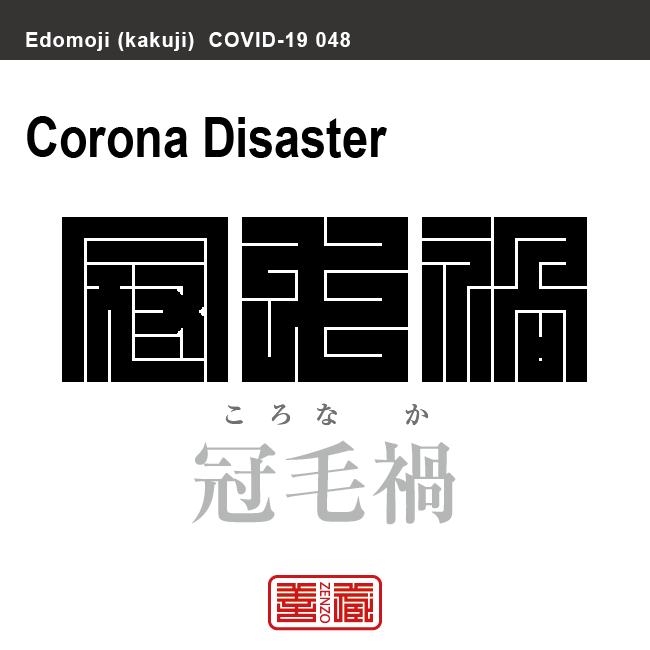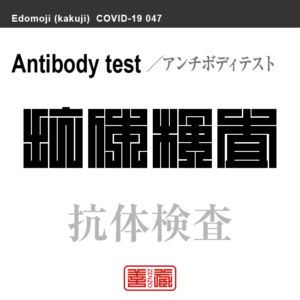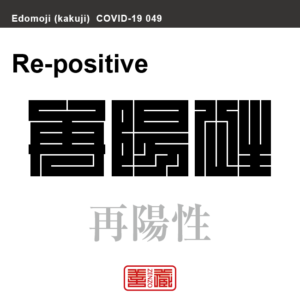コロナ禍/冠毛禍/光冠禍 ころなか 角字で新型コロナウイルス感染症関連用語、漢字表記

コロナ禍/冠毛禍/光冠禍
ころなか
Corona Disaster
Unicode: [冠_0x51A0][毛_0x6BDB][禍_0x798D]
新型コロナウイルスの感染拡大によって生じるさまざまな「禍(わざわい)」「災難」「不幸なできごと」を意味することば。世界規模の危機的、災厄的な状況を表す言葉。
新型コロナウイルスは、経済や社会に大打撃を与え、多くの人々の希望や命を奪ってきました。そのような新型コロナウイルス感染症の流行が拡大するとともに、2020年3月半ば頃から日本において「コロナ禍」という言葉が広く用いられるようになりました。
角字とは?
江戸時代に誕生した角字は、正方形のグリッド内にほぼ水平・垂直のラインのみで文字(漢字)が表現されるグラフィックアートです。
正方形という限られた空間の中に、あらゆる文字を閉じ込めようとするグラフィックデザインは、前述した、ミニマムな物に対する日本人特有のこだわりが随所に感じられます。
そのシンプルで有りながら、奥深い「角字」は多くの日本人を魅了し、お祭りで着る半被や印半纏(しるしばんてん)と言われる着物や、商標、印鑑、家紋、看板デザインなどに今日まで数多く使用されてきました。
What is Kakuji?
There is a style of penmanship called “Kakuji” in Japan. Edo-born Kakuji is a graphicart that expresses letters (kanji) with almost horizontal and vertical lines only.
The design which bases on many straight lines seems simple, or too plain even at its first glance; yet this beautiful artistic penmanship that encompasses the aesthetic of the Japanese in the Edo era, also known as “Iki”, and playfulness has long been inherited to this day, thanks to the masteries’ long years of efforts in training and refinement.
Kakuji with its simplicity and depth is used for designs such as trademark, hanko stamp, family crest and signboard.































































 2文字コード:MZ 3文字コード:MOZ 数字:508 ITU:258 ccTLD:.mz
2文字コード:MZ 3文字コード:MOZ 数字:508 ITU:258 ccTLD:.mz







































































































































